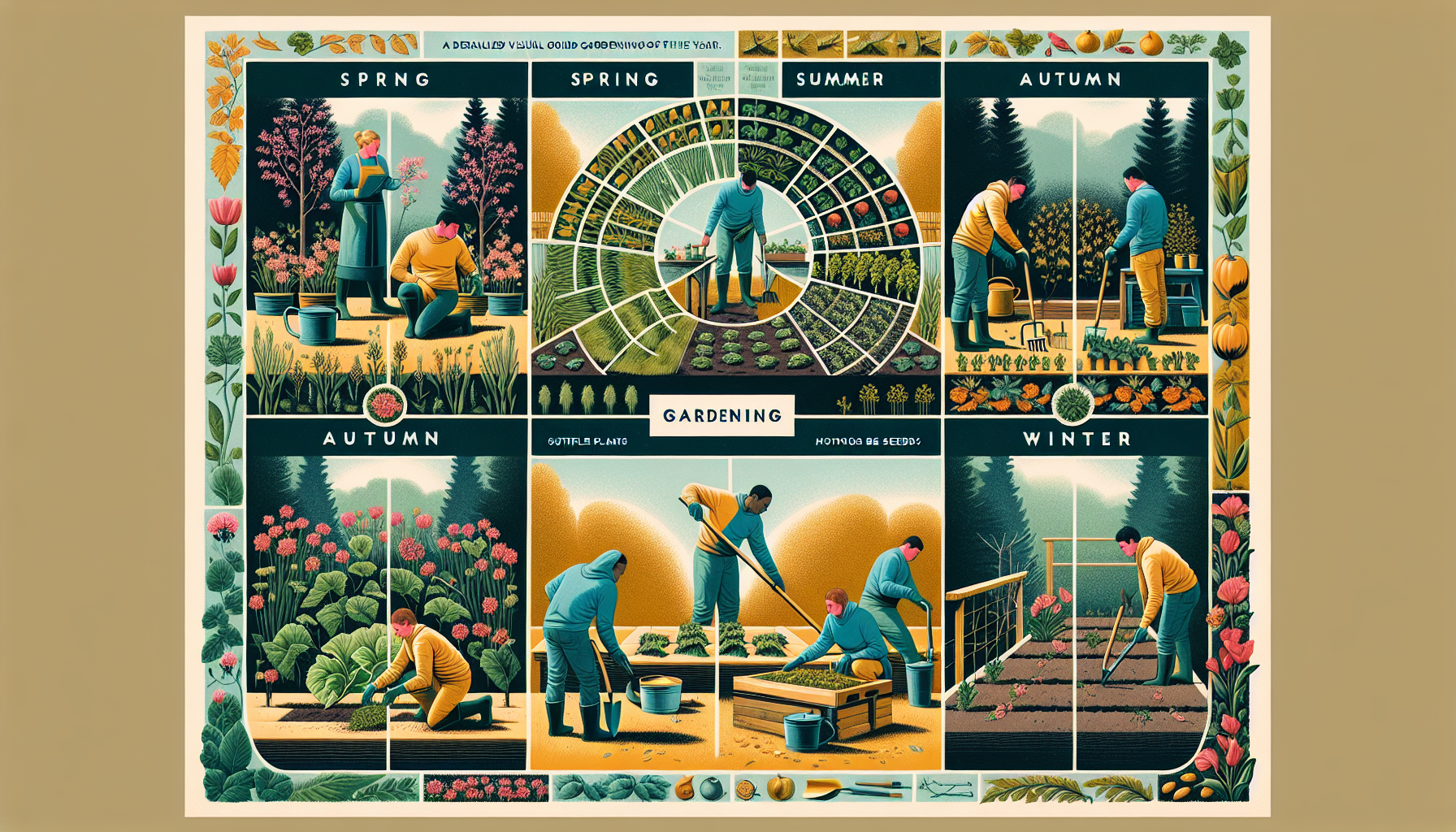
Timing is everything in spring planting. Utilize a planting calendar to align your seeds with the last frost dates in your region, ensuring each plant has the optimal conditions to flourish. Companion planting can enhance growth and deter pests naturally—marigolds alongside tomatoes, for instance, can keep unwanted insects at bay while adding a splash of color.
Don’t overlook the importance of proper spacing and sunlight. Even in the early days of spring, positioning your plants to receive adequate light can make a significant difference in their development. Regular watering, especially during dry spells, helps maintain consistent moisture levels without overwhelming the roots. Mulching around your plants not only conserves water but also suppresses weeds, giving your garden guide a smoother path to success.
Embrace the diversity of spring by experimenting with both annuals and perennials. Planting bulbs like tulips and daffodils can provide bursts of color year after year, while annuals such as pansies and poppies offer vibrant, short-term displays. By thoughtfully planning your spring garden, you set the stage for a thriving, year-round harvest that reflects the careful strategies of seasonal gardening.
Summer Garden Maintenance
As the temperatures rise, keeping your garden vibrant and productive requires a proactive approach. Start by establishing a consistent watering routine, aiming to hydrate your plants early in the morning. This reduces evaporation and minimizes the risk of fungal diseases. Consider setting up a drip irrigation system; it delivers moisture directly to the roots, ensuring efficiency and conserving water during those scorching days.
Pest control becomes a crucial aspect of summer maintenance. Instead of reaching for chemical solutions, opt for natural remedies like neem oil or introduce beneficial insects such as ladybugs and lacewings to keep harmful pests in check. Regularly inspect your plants for signs of trouble, and act swiftly to prevent infestations from taking hold.
Pruning and deadheading are essential for maintaining plant health and encouraging continuous blooms. Remove spent flowers and trim back any leggy or overcrowded branches to improve air circulation. This not only keeps your garden looking tidy but also helps plants direct their energy towards growth and fruit production.
Mulching remains a steadfast practice during the summer months. A thick layer of organic mulch around your plants helps retain soil moisture, regulate temperature, and suppress weeds. Materials like straw, wood chips, or compost are excellent choices that enrich the soil as they decompose.
Focus on selecting heat-tolerant varieties that can withstand the intense summer sun. Vegetables such as tomatoes, peppers, and zucchini thrive in warmer conditions, while herbs like basil and rosemary flourish with ample sunlight. Aligning your planting calendar with these robust plants ensures a bountiful harvest even in the peak of summer.
Don’t forget to provide some relief for your plants during the hottest part of the day. Using shade cloths or strategically placing taller plants to offer natural shade can protect more delicate species from sunburn and stress. Additionally, regularly replenish your soil with organic fertilizers to maintain nutrient levels, supporting vigorous growth throughout the summer season.
By staying attentive and adapting your garden care practices to the demands of summer, you can enjoy a thriving garden that contributes to your year-round harvest plan.
Fall Harvesting Techniques
As the leaves begin to change, it’s time to shift your focus to reaping the rewards of your hard work. Harvesting at the right moment ensures peak flavor and nutritional value. For root vegetables like carrots and beets, wait until the soil cools, which often enhances their sweetness. Gently pull them from the ground to avoid damaging the roots, and brush off excess soil before storing.
Leafy greens such as kale and spinach are best picked before they bolt. Select the outer leaves first, allowing the inner leaves to continue growing. This selective harvesting promotes a continuous supply throughout the season. Remember to use clean, sharp scissors to make precise cuts, reducing the risk of disease transmission between plants.
Fruit-bearing plants require careful attention as well. Tomatoes should be harvested when they reach full color and slight firmness, while peppers can be picked at various stages depending on your flavor preference. Don’t forget about late-season crops like pumpkins and squashes; their vines can be left to mature fully, providing storage-friendly produce for the winter months.
Preparing your garden for the colder months involves more than just harvesting. Clearing out spent plants and debris helps prevent disease and pests from overwintering in your beds. Incorporate the remnants into your compost or use them as mulch to enrich the soil for next year’s planting. Adding a final layer of compost or aged manure can boost soil fertility, setting the stage for a productive cycle ahead.
Preserving your harvest extends the enjoyment of your garden well into the colder months. Canning, freezing, and drying are excellent methods to keep your vegetables and herbs usable year-round. For example, blanch and freeze beans or carrots, or dry your own herbs to maintain their flavors. Root cellaring carrots and beets in a cool, dark place can also extend their shelf life significantly.
Reflecting on this fall’s growth allows you to refine your strategies for the next planting cycle. Documenting what worked and what didn’t in your garden guide can lead to more informed decisions and a more bountiful harvest in the years to come. Seasonal gardening isn’t just about current yields; it’s an ongoing dialogue with nature that rewards patience and observation.

